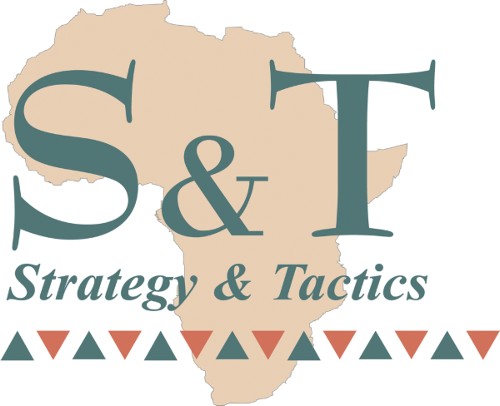


Introduction to the special edition
In May 2008, the world watched in horror as South Africans turned on African migrants with murderous intent, killing, looting, raping women and girl-children, and leaving tens of thousands homeless. The image of 35-year-old Ernesto Alfabeto Nhamuave on his knees, burning to death and screaming for help while South Africans looked on, perhaps symbolized the moment for many. What had happened to the ‘Rainbow Nation’? How had South Africa reached such a state in just 14 years?
In response to the violence, which flared up in parts of Gauteng before spreading to parts of the Western Cape and KwaZulu-Natal, civil society organizations (CSOs) played a critical role in mobilizing both resources and public opinion, while state agencies seemed unable to respond either at scale or with appropriate speed. As a human rights catastrophe unfolded, government turned to its disaster management structures to help—they, of course, had been equipped to handle flash flooding and shack fires, not blood-letting. Civil society emerged as flexible, innovative and creative, with new coalitions forming, new structures emerging (such as the Social Justice Network), a younger generation being drawn into socio-political work, and suggesting that a rebirth of civil society might be at hand. Not since the heady days of the transition to democracy had CSOs been so prominent, so active, and so impactful.
This special edition of Politikon is based on a major study of civil society and xenophobia in South Africa. In 2009, a year after the May/June violence, The Atlantic Philanthropies commissioned the research agency Strategy & Tactics (S&T) to assess the response of South African civil society to the xenophobic violence and the implications for the future of civil society. The project sought to understand how civil society had responded to xenophobia and violence, and to African migrants themselves. The basic question was: had the seeds of a renaissance for South African civil society been planted, or was civil society doing what it does well—responding to a crisis, but failing to maintain momentum on a day-to-day basis?
S&T worked in partnership with the Gauteng City-Region Observatory (itself a partnership of the University of Johannesburg, the University of the Witwatersrand and Gauteng Provincial Government); the Centre for Sociological Research at the University of Johannesburg; Sally Peberdy from the University of the Western Cape; Mazibuko Jara of the Amandla Forum; the Centre for Civil Society at the University of KwaZulu-Natal; and Karuti Kanyinga of South Consulting in Nairobi.
The project was based on a series of case studies, which were used as building blocks for synthesis overview papers. This edition of Politikon includes a mix of the two. Some of the case studies looked at the responses of specific sectors such as faith-based organizations, trade unions, the African National Congress (ANC), Congress of South African Trade Unions (COSATU) and the corporate sector. Others looked at specific spatial areas where violence was intense—sites in Gauteng, KwaZulu-Natal and the Western Cape—and places where it was averted, such as Khutsong. Another provided a meta-review of existing media reviews of the xenophobic violence, while a background paper drew on some 20 focus groups that had been staged immediately before and after the May 2008 violence, during which participants spoke of their mounting anger prior to the May violence and then (in the second phase of groups) reflected back on it—often with deep menace.
This latter paper, the first article in this edition, sets the scene for what happened by reminding us of the conjunctural moment that allowed simmering resentment to break out into mob violence—something that has not happened before or since. Poor economic conditions marked by rising unemployment and a huge spike in oil prices were matched by rising interest rates and a steadily rising cost of living, and compounded by widespread electricity blackouts. The economic frustration was compounded by the political impasse that had seen then-President Mbeki seek a third term as ANC President, only to be defeated by Jacob Zuma, who himself had been at the centre of a series of court cases dealing with allegations of rape and corruption. The deeply divided ANC offered little coherent leadership, and the focus groups that were taking place at the time found widespread, overtly xenophobic sentiments, as anger mounted against ‘foreigners’ who were ‘taking our jobs’, ‘taking our women’, bribing officials to get houses meant for South Africans, peddling drugs, and generally being blamed for all the social ills that beset the country.
Within the research project, a deliberate attempt was made to bring migrant voices into the project rather than treat migrants as a passive subject merely to be studied from a distance. Migrants—activists and ordinary citizens—were interviewed, and provided an important reminder of the existence within South Africa of a parallel set of migrant CSOs which are rarely drawn into the work of South African community-based organizations (CBOs) or non-governmental organizations (NGOs). When multilateral agencies decided to provide support, they too selected South African CSOs and bypassed migrant CSOs operating within the country. Migrant CSOs are often poorly funded, rarely work with South African CSOs or donor organizations, and are intensely aware of their peripheral status to South Africans, which contrasts with the services they provide to their fellow migrants who have moved to South Africa. The project also looked to see how civil society organizations had responded to violence in the Great Lakes region and the post-election violence in Kenya.
Sadly, most authors conclude that while civil society did indeed play a critical role during and after the violence, it has lost ground and returned to the status quo ante. Migrants, refugees, asylum seekers and others remain locked out of many CSOs, do not appear on their agenda, and have returned to their own CSOs, which exist parallel to but separate from South African CSOs. This is not universally true, and some of the coalitions and new forms of organizing that emerged in 2008 remain in place—but many rely on the energy and commitment of a handful of activists, rather than having more deeply planted roots. While civil society has largely returned to the position it held in early 2008, violence against African migrants has done the same. There have not been further massive conflagrations dominating world media attention, but there have been an ongoing, low intensity set of attacks which are barely reported but are no less murderous for that.
Structure
The special edition opens with a piece by Everatt that draws on primary data gathered before and immediately after the May/June violence, in order to hear the voices of people living in areas where the violence occurred. These voices are contrasted with those of academics and commentators, and with senior politicians, many of whom veer from denial (in the latter case) to debating how to ‘label’ the violence (among the former). Two subsequent articles locate the specifics of civil society's responses to xenophobic violence, firstly in Cape Town, and then in Durban. In both cases, the strength and creativity of civil society's response contrasts strongly with that of the state—but in both cases it is noted that the situation has returned to the status quo ante. Migrants and their concerns and issues have left the agenda of South African civil society.
These are followed by two ‘framing’ pieces. In the first of these, Karuti Kanyinga uses his detailed study of the critical role of civil society in ending the post-election violence in Kenya both to show what civil society can do and, more importantly, to problematize the whole notion of civil society in an African context. He calls for a far more nuanced understanding of civil society than is generally available in the literature and praxis, where civil society is largely regarded as pro-democracy (of a particular type) that can be called on when necessary and otherwise ignored. Smith, on the other hand, provides a ‘meta-review’ of (reviews of) the media, and the way in which media representations of violence—and of migrants as irredeemably ‘foreign’ (and male)—have assisted othering and are thus part of the problem, by creating an environment in which the violence could easily occur.
Thereafter we move to three specific case studies. Sinwell looks at Alexandra, and in particular at the left social movements and the battle their leaderships face when constantly under pressure to ‘get rid of foreigners’ from their support base. Hlatshwayo points to a similar problem facing COSATU and many of its affiliates, and details the general failure of this key civil society actor to play a significant role in stopping the violence of working with other civil society actors during the violence. He nonetheless concludes that COSATU has learned some important lessons about working-class solidarity that now need to be put into practice. Nyar wraps up the edition by exposing the extent to which for corporate South Africa, the major beneficiary of the low wages and externalized costs that migrancy permits, ‘business as usual’ was and remains the model.
Language
A couple of points about language. Firstly, a number of chapters debate the issue of whether xenophobia was at play, or ‘Afrophobia’ or ‘negrophobia’ or some other formulation. Despite the ongoing insistence of some political leaders that the violence was criminally inspired and that no evidence of xenophobia has ever been offered, every author in the project agreed that they found xenophobic acts and attitudes.
Secondly, the word ‘foreigner’ appears in many places. Again, some authors spend time unpacking the differences between migrants, refugees, asylum seekers and others; and the fact that the focus of the violence was black African migrants—from inside and outside South Africa—but not white/Asian/other foreigners. ‘Foreigner’—in this edition—is not pejorative, and is used for the sake of simplicity.
Focus
Readers should be aware of the fact that from the outset, the project had a primary focus on civil society, in the context of its response to xenophobia. This of course required authors to debate the issue of xenophobia (and enjoin debates about how to label it most accurately), but this edition of Politikon, like the study from which it emanates, seeks to maintain a balance between analysing and understanding xenophobia (and contrasting it with ethnic violence in Kenya, for example) while assessing the current state and nature of civil society in South Africa.
Acknowledgements
Finally, it is worth noting that the editors of Politikon were kind enough to offer us a special edition focusing on xenophobia and civil society—for which we are extremely grateful—but gave us slightly less than three months to get the articles finalized, reviewed, revised, and submitted—for which we are slightly less effusive in our thanks. Nonetheless, authors—and peer reviewers in particular, from all over the world—rose to the challenge and working at high speed to ensure that this special edition could be realized, and my deep gratitude is extended to all of them. Finally, we are deeply grateful to Gerald Kraak of The Atlantic Philanthropies, who is a deeply insightful and progressive donor, and whose dogged commitment to actively promoting and protecting human rights for all made the entire project possible.